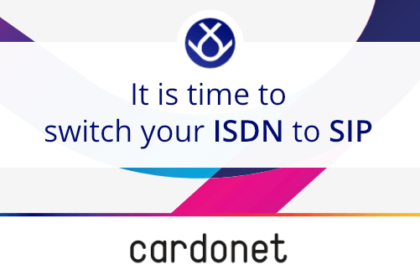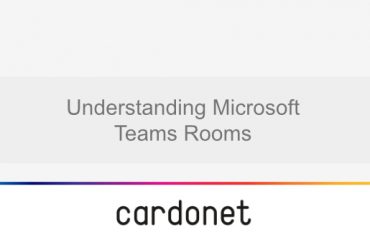
A few years ago, Openreach announced that ISDN phone lines will be switched off in 2025. If your business is still using the outdated network, now is the time to switch.
ISDN’s successor, SIP Trunking, is a faster, cheaper, and more flexible alternative.
Any change can be daunting. Luckily, the switch from ISDN to SIP is likely simpler than you think.
What is ISDN?
ISDN (Integrated Service Digital Network) transmits both voice and data through copper wires connected by telephone exchanges.
It was initially adopted as a more effective, digital alternative to traditional analogue lines. As the technology has advanced, though, it has become increasingly clear to businesses and experts alike that ISDN is no longer fit for purpose.
What is SIP and SIP Trunking?
SIP stands for ‘Session Initiation Protocol’. It’s a set of rules that let you initiate or terminate a communication session with an IP (Internet Protocol) link. ‘Trunking’ just describes the system that allows you to put these protocols into practice.
Like ISDN, your voice and video calls are digital, but with SIP Trunking, they are transmitted over a virtual line rather than a physical one.
Why should you switch from ISDN to SIP?
ISDN is…:
- Not going to be around much longer. As mentioned earlier, ISDN lines are going to be ‘switched off’ by BT in 2025. They are already in the process of unwinding the service. The sooner your business switches, the better. You don’t want to find yourself frantically trying to change office lines just before the deadline.
- Expensive. The cost of your office’s phone system is one of those unavoidable overheads. If you’re using ISDN, your business is probably spending far more than it needs to. You face expensive installation costs of changing location or setting up new offices, the rental and maintenance fees associated with using physical equipment, and the comparatively pricey call rates.
- Tied to a physical location. That means more hassle, and less flexibility. It makes growth harder, as you have to consider the administration and fees that come with setting up telecommunications for a new office. It also prevents your business from taking full advantage of hybrid-working, which has become the norm in recent years.
- Going to get harder and harder to maintain. New engineers cut their teeth on new technology. As ISDN becomes more outdated, there are going to be less engineers who’ll be able to maintain and fix your system. This means that the engineers who can help you will charge more to do so, and that you’re more likely to have longer down-time when something does go wrong. This is aside from the fact that issues with ISDN lines can already take a few days to resolve.
…while SIP is:
- Affordable. It’s estimated that your business will save around 50% on business calls. It’s not hard to see why. An internet connection isn’t prohibitively expensive, and is a cost that your business already incurs for your other operations that require connectivity. Rather than paying separately for both voice and data, you can pay for them both as a single package. You also don’t need to pay for any infrastructure or its maintenance.
- Flexible. Adding new lines is easy – it can be done remotely by your provider within seconds. When you’re growing your business, there are many things you need to worry about scaling. With SIP Trunking, your office phone system is not one of them. It also takes out some of the hassle that comes with relocating. Additionally, your business can embrace hybrid-working, as you can redirect calls to anywhere with an internet connection.
- Reliable. The move to SIP Trunking is a move to a more resilient business. Physical infrastructure has risks – if there is fault somewhere your phone lines could go down. Regardless of what your business does, communication with customers, employees, and other businesses is vital to its day-to-day operations. Bad weather or network issues shouldn’t come in the way of that. With SIP Trunking, there are safeguards against system failures: you can reroute calls to other lines, whether that’s another office or your employee’s cell phones.
Some ISDN and SIP myths, busted
MYTH #1: My call quality will suffer with SIP.
This is the most common myth associated with the switch from ISDN to SIP Trunking. It might come from skepticism towards a completely virtual phone line, or from people’s experience with internet calling on platforms like WhatsApp and Skype.
This simply isn’t true. Physical lines don’t provide any better of a service than virtual lines, it just depends on the quality of your internet connection. You should already have an internet package that caters to the needs of a business – and if that’s the case, you won’t be able to tell the difference between a call transmitted through a physical line or a broadband connection.
MYTH #2: This much change is more trouble than it’s worth.
You might be reading this and think “This certainly looks attractive in the long run… but I’m just too busy to handle a system change of this size.”
Don’t worry – while this will be a big change for your business, it’s not a difficult one to make. You can keep all your current numbers, so you don’t have to worry about losing any customers that can no longer contact you. Also, the actual installation process is a breeze! SIP Trunks use the internet connection that you already have, and the whole process only takes a few hours. You can install it in portions, like floor by floor, so you don’t need to worry about any downtime.
MYTH #3: ISDN is tried and tested – it’s safer to stick with it than try something new
One response to this is “ISDN won’t be around much longer, so your business is just going to have to adapt”.
This response isn’t helpful. It’s understandable to feel comfortable with your current technology, and not want to risk switching to something untested – but SIP Trunking has been tested, with great results. Businesses that adopt it have found it to be far more cost-effective and reliable than ISDN. Even if we don’t consider the 2025 deadline, the switch to SIP is a solid business decision that will future-proof your office phone system.
If you’re looking for a trusted IT partner to help your business switch from ISDN to SIP, reach out to us today on +44 203 034 2244 or +1 323 984 8908. Alternatively, you can contact us online.
Our friendly team will help you plan and implement a move from ISDN to SIP with minimal interference to your day-to-day operations. We have engineering bases in the United Kingdom, Europe and Southern California and our group of highly experienced engineers are available 24/7 to assist you in your move.



You must be logged in to post a comment.